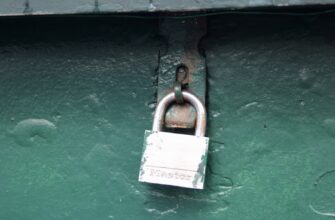- Encrypt Crypto Wallet Without KYC for Beginners: Ultimate Privacy Guide
- What is a Non-KYC Crypto Wallet?
- Why Encrypt Your Crypto Wallet?
- Step-by-Step Guide to Encrypting Your Wallet Without KYC
- Best Practices for Wallet Security
- Frequently Asked Questions (FAQ)
- Is encrypting a non-KYC wallet legal?
- Can I recover funds if I forget my encryption password?
- Are non-KYC wallets less secure than KYC options?
- How often should I update my encryption password?
- Can governments trace non-KYC encrypted wallets?
Encrypt Crypto Wallet Without KYC for Beginners: Ultimate Privacy Guide
In today’s digital age, securing your cryptocurrency is non-negotiable. For beginners seeking financial autonomy, learning to encrypt a crypto wallet without KYC (Know Your Customer) verification offers unparalleled privacy and control. This guide breaks down the essentials of non-KYC wallet encryption in simple terms—no technical expertise required. Discover why privacy matters, how encryption shields your assets, and step-by-step methods to fortify your holdings while maintaining anonymity.
What is a Non-KYC Crypto Wallet?
Non-KYC crypto wallets allow you to store, send, and receive digital assets without identity verification. Unlike centralized exchanges requiring personal documents, these wallets prioritize user anonymity. They fall into two categories:
- Software Wallets: Apps like Exodus or Atomic Wallet that generate keys locally on your device.
- Hardware Wallets: Physical devices (e.g., Ledger, Trezor) storing keys offline for maximum security.
By avoiding KYC, you reduce exposure to data breaches and maintain sovereignty over your funds—but encryption becomes your first line of defense.
Why Encrypt Your Crypto Wallet?
Encryption transforms your wallet data into unreadable code, accessible only with a password or key. Here’s why it’s critical:
- Prevent Unauthorized Access: Thwarts hackers if your device is lost/stolen.
- Bypass Surveillance: Shields transactions from prying eyes in restrictive regions.
- Asset Protection: Adds a vital layer against malware or phishing attacks.
- True Ownership: Eliminates reliance on third-party custodians.
Without encryption, your private keys—the gateway to your crypto—are vulnerable to exploitation.
Step-by-Step Guide to Encrypting Your Wallet Without KYC
Follow these beginner-friendly steps to encrypt a non-KYC wallet securely:
- Choose a Non-KYC Wallet: Install privacy-focused software like Electrum (Bitcoin) or MyEtherWallet (Ethereum). Avoid exchanges requiring ID.
- Create a Strong Password: Use 12+ characters with uppercase, symbols, and numbers. Never reuse passwords.
- Enable Encryption: In wallet settings, select “Encrypt Wallet” and enter your password. Confirm twice.
- Backup Seed Phrases: Write down the 12-24 recovery words offline. Store them in fire/water-proof locations—never digitally.
- Verify Encryption: Restart the wallet. You should now need your password to access funds.
Note: Encryption applies to software wallets. For hardware wallets, the device itself encrypts keys—just set a robust PIN.
Best Practices for Wallet Security
Encryption is just the start. Adopt these habits to lock down your assets:
- Use hardware wallets for large holdings—they’re immune to online hacks.
- Enable two-factor authentication (2FA) on associated email accounts.
- Regularly update wallet software to patch vulnerabilities.
- Never share seed phrases, passwords, or private keys—even with “support” agents.
- Use VPNs when accessing wallets on public Wi-Fi to mask your IP.
Frequently Asked Questions (FAQ)
Is encrypting a non-KYC wallet legal?
Yes, encryption is legal worldwide. Non-KYC wallets comply with regulations as long as you don’t engage in illicit activities. Privacy is a fundamental right.
Can I recover funds if I forget my encryption password?
No. Your password is irrecoverable by design. Only your seed phrase can restore access—another reason to guard it fiercely.
Are non-KYC wallets less secure than KYC options?
Not inherently. Security depends on encryption strength and user practices. Non-KYC wallets often offer superior privacy since they don’t store your personal data.
How often should I update my encryption password?
Change it annually or immediately if you suspect a breach. Use a password manager to track complex passwords securely.
Can governments trace non-KYC encrypted wallets?
Transactions are visible on the blockchain, but wallet ownership remains anonymous. Advanced tools like CoinJoin (for Bitcoin) can further obscure trails.
By encrypting your non-KYC wallet, you take control of your financial privacy. Start small, follow these steps meticulously, and remember: in crypto, you are your own bank. Stay vigilant, stay secure.








